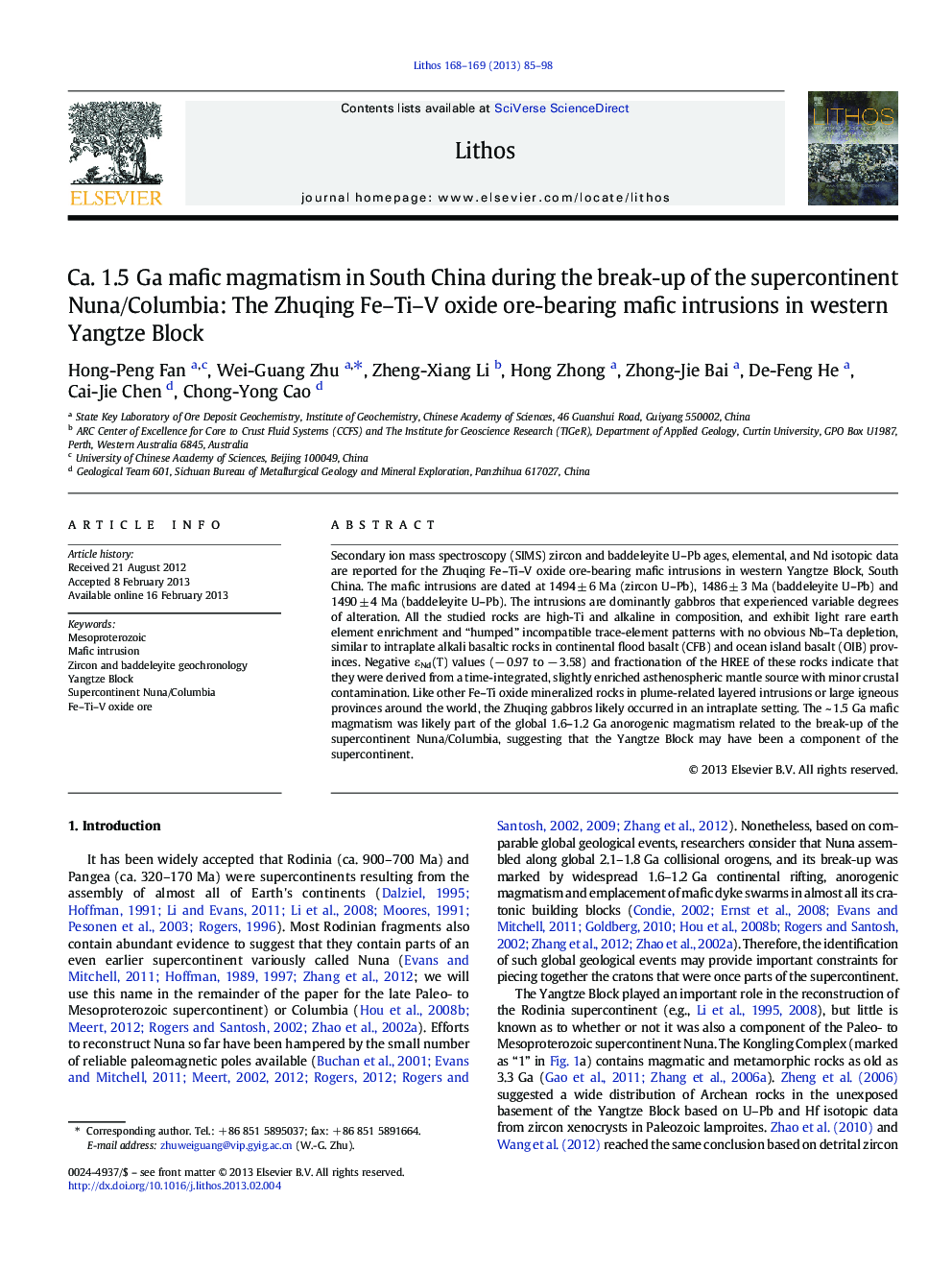| کد مقاله | کد نشریه | سال انتشار | مقاله انگلیسی | نسخه تمام متن |
|---|---|---|---|---|
| 4716309 | 1638693 | 2013 | 14 صفحه PDF | دانلود رایگان |

Secondary ion mass spectroscopy (SIMS) zircon and baddeleyite U–Pb ages, elemental, and Nd isotopic data are reported for the Zhuqing Fe–Ti–V oxide ore-bearing mafic intrusions in western Yangtze Block, South China. The mafic intrusions are dated at 1494 ± 6 Ma (zircon U–Pb), 1486 ± 3 Ma (baddeleyite U–Pb) and 1490 ± 4 Ma (baddeleyite U–Pb). The intrusions are dominantly gabbros that experienced variable degrees of alteration. All the studied rocks are high-Ti and alkaline in composition, and exhibit light rare earth element enrichment and “humped” incompatible trace-element patterns with no obvious Nb–Ta depletion, similar to intraplate alkali basaltic rocks in continental flood basalt (CFB) and ocean island basalt (OIB) provinces. Negative εNd(T) values (− 0.97 to − 3.58) and fractionation of the HREE of these rocks indicate that they were derived from a time-integrated, slightly enriched asthenospheric mantle source with minor crustal contamination. Like other Fe–Ti oxide mineralized rocks in plume-related layered intrusions or large igneous provinces around the world, the Zhuqing gabbros likely occurred in an intraplate setting. The ~ 1.5 Ga mafic magmatism was likely part of the global 1.6–1.2 Ga anorogenic magmatism related to the break-up of the supercontinent Nuna/Columbia, suggesting that the Yangtze Block may have been a component of the supercontinent.
► SIMS Zircon and baddeleyite U–Pb dating results reveal a ~ 1.5 Ga age for the Zhuqing mafic intrusions.
► The intrusions were probably derived from a slightly enriched asthenospheric mantle source.
► They were generated under a continental rift environment likely related to the break-up of the supercontinent Nuna/Columbia.
► The Yangtze Block was likely a fragment of the Paleo- to Mesoproterozoic supercontinent Nuna/Columbia.
Journal: Lithos - Volumes 168–169, May 2013, Pages 85–98